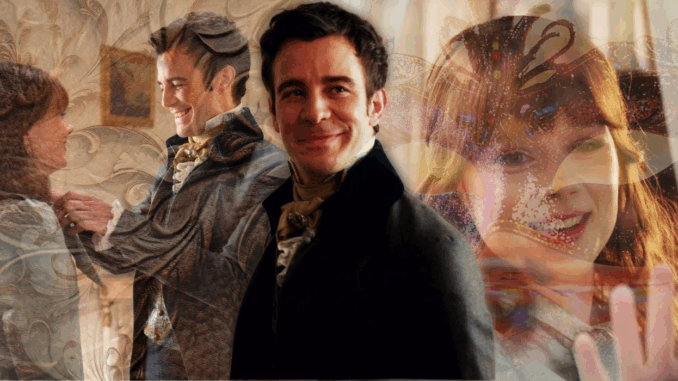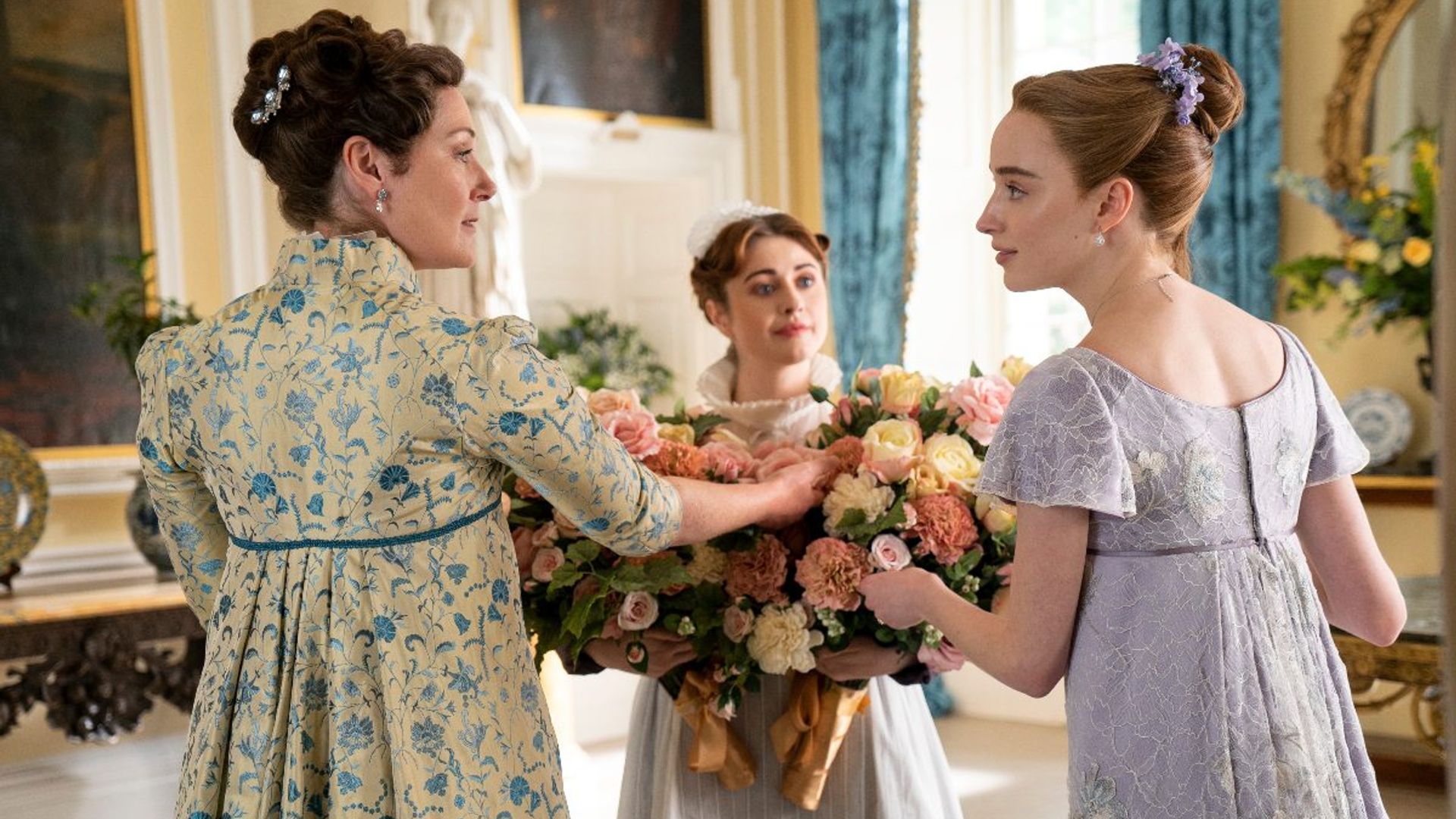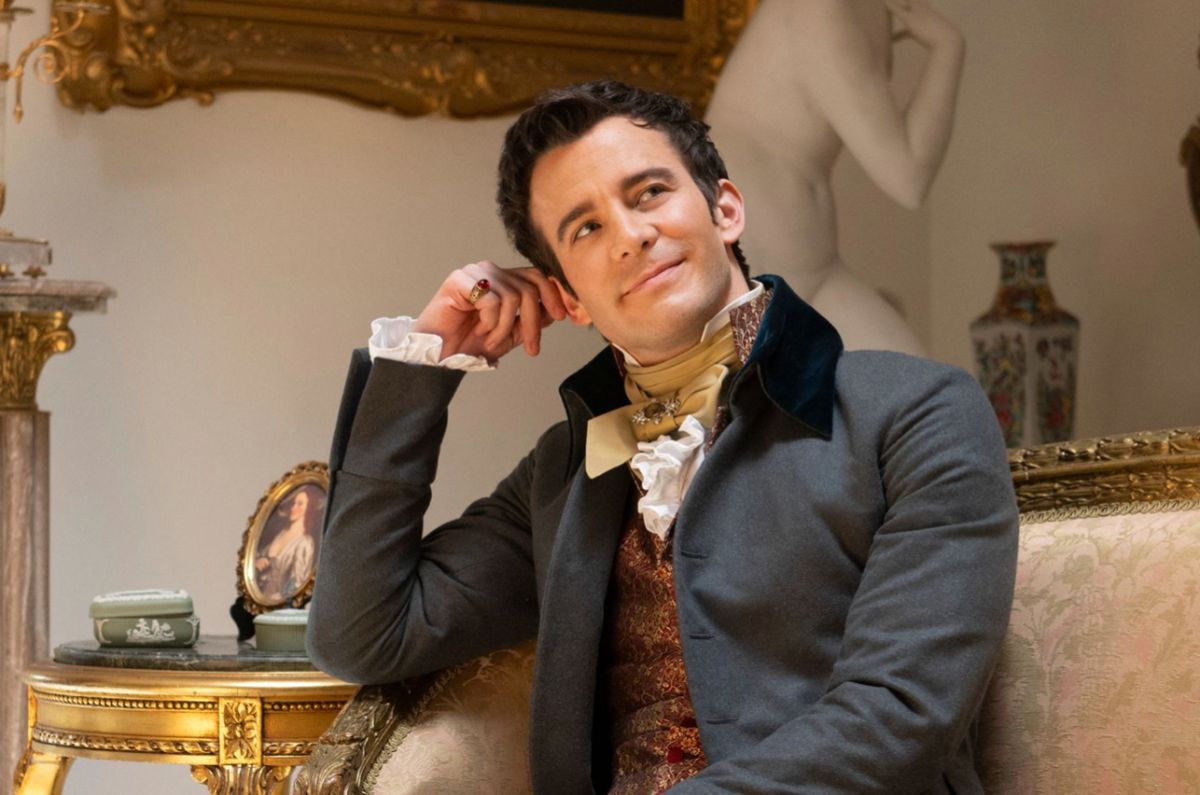
A Bohemian Son No More: Benedict Steps into the Spotlight
The whispers have turned into a roar within the ton, and all eyes are now firmly fixed on none other than the elusive second son of the Bridgerton family. Long shrouded in artistic flair, unpredictable charm, and a refusal to conform, Benedict Bridgerton—portrayed by the ever-compelling Luke Thompson—has finally begun to step into his long-overdue spotlight. And may I say, he does so with a captivating boldness that leaves the ballroom spinning.
Fluidity, Desire, and the Unexpected Throuple
In Bridgerton Season 3, Part 2, Benedict’s journey takes a daring and refreshingly modern turn. Amid glances stolen beneath chandeliers and desires whispered behind silk fans, the show cracks open a long-simmering question about Benedict’s fluidity—and instead of sidestepping it, fully embraces the complexity of his character. What began as flirtations with the unapologetically independent Lady Tilley Arnold soon evolved into something far more intriguing when she introduced Benedict to her friend Paul. Suddenly, the ton found itself witnessing a potential throuple, one that challenged not only societal norms within the show’s universe but also expectations of viewers raised on Julia Quinn’s original novels.
This moment is more than a scandalous subplot; it’s a meaningful shift in the storytelling. Benedict’s arc now speaks to a generation navigating love beyond binaries. And while the throuple might not last forever—Benedict does, after all, turn down Tilley’s offer of exclusivity—it opens the door to a richer, more inclusive vision of romance in the Bridgerton universe.
Sophie Still Awaits in the Wings
But fret not, dear lovers of the original novels—Sophie is far from forgotten, and her presence continues to linger just beyond the edges of the dance floor, waiting for the right moment to step into the light. While Season 3 may have taken unexpected turns in Benedict’s journey, the heart of his romantic arc the masked ball, the mysterious Lady in Silver, the Cinderella-esque intrigue remains firmly intact. Showrunner Jess Brownell has reassured fans that this beloved storyline is “very much in the cards,” and not only that, but it will unfold with all the care, nuance, and richness the character of Benedict now deserves.
This isn’t a rewrite of his fate, but rather a reimagining that honors the spirit of the original love story while adding layers of emotional complexity. The expanded portrayal of Benedict’s fluidity is not a detour, but a deeper exploration of his capacity to love beyond convention and expectation. His fairytale ending with Sophie is not being sacrificed—it is being earned. By allowing audiences to see the full spectrum of his identity, desires, and vulnerabilities, Bridgerton is not merely adapting a romance; it is elevating it.

When Sophie finally arrives, it won’t be to rescue Benedict from confusion or isolation. Instead, she will meet a man who has discovered who he is and what he values. The masquerade ball will not mark the beginning of his story, but rather the culmination of a journey—a journey toward self-acceptance, emotional readiness, and a love that doesn’t ask him to choose between parts of himself. Benedict is not being rewritten. He is, at long last, being revealed in full.
The Masquerade Ball Beckons
Season 3’s finale offers a subtle yet tantalizing breadcrumb for what lies ahead—a moment so brief it could be missed, yet so weighted with meaning that book fans surely held their breath. In a quiet exchange, Eloise informs Benedict that she’ll be returning home in time for Violet’s masquerade ball. For casual viewers, it’s a simple logistical note. But for long-time readers of Julia Quinn’s novels, it’s the signal flare of a long-awaited moment: the beginning of Benedict’s story. The masquerade ball isn’t just a glamorous social affair—it’s the very scene where fate intervenes.
In the book An Offer From a Gentleman, the masquerade is the enchanted evening where Benedict first meets his mysterious “Lady in Silver”—a masked young woman who vanishes before he can uncover her identity, leaving behind only a sense of wonder and the ache of unfinished connection. The show’s version appears to be honoring that moment, but with a modern twist. Enter Sophie Baek a subtle but significant adaptation of Sophie Beckett portrayed by the magnetic Yerin Ha, known for her work in Pachinko. This change in heritage reflects Bridgerton’s growing commitment to diverse storytelling while retaining the emotional spine of the original tale.
The promise of this masked encounter is more than just a romantic setup. It is poised to deliver exactly what Bridgerton excels at: an aching, slow-burn love story layered with mistaken identities, hidden longings, and societal constraints. The ball, the swirling violins, the anonymity of masks—all serve as a narrative cocoon, allowing Benedict to fall in love with someone beyond social rank, without prejudice or pretense. And for Sophie, a woman caught between worlds, the ball offers a rare moment of freedom—to be seen, desired, and chosen not for who she should be, but for who she is.
In setting the stage for this fateful encounter, Bridgerton positions itself to explore themes of visibility, class, and identity in deeply resonant ways. The masquerade ball isn’t merely a beautiful backdrop—it’s a crossroads, where hearts are unmasked even as faces remain hidden. If the adaptation continues to honor both the spirit of the books and the emotional intricacy of its characters, Benedict’s story may very well become the most tender and transformative yet.
A Universe That Dares to Expand
This new chapter in Benedict’s journey is not occurring in isolation—it is part of Bridgerton’s broader, bolder evolution. The series has grown beyond simply telling love stories; it is now actively reimagining them, reshaping what romance looks like, who it includes, and how it is expressed. Gone are the days when desire followed a single, narrow path. In this world of swirling gowns and stolen glances, Bridgerton now makes space for the kind of love stories that have long existed in the shadows complex, queer, and unafraid to challenge tradition.
Francesca’s arc is perhaps the most striking example. Her Season 3 romance introduces Michaela Stirling, a thoughtful reimagining of Michael from the novels. With this subtle yet significant gender-swapped twist, her story takes on new resonance. What was once a tale of quiet grief and rediscovery becomes something even more delicate: an exploration of identity, constraint, and the freedom to love beyond expectation. Francesca, known for her introspective nature, suddenly stands at the cusp of a relationship that feels at once radical and deeply rooted in emotional truth.
And then there is Eloise. Long marked by her sharp tongue and refusal to conform, she has consistently danced to a different rhythm than the rest of the ton. Her emotional solitude, her fierce independence, and her complex friendship with Penelope all suggest a deeper current one that hints at a queer arc yet to fully surface. Rather than rushing this journey, the show wisely lets it simmer, giving her space to evolve in her own time.
Across all of these stories, Bridgerton embraces queerness not as a passing subplot or a decorative flourish, but as an integral thread in the fabric of its universe. Each new season peels back more layers, treating queerness not as a deviation from the norm but as something as timeless, powerful, and worthy of epic storytelling as any grand ballroom waltz or carriage ride under moonlight. In doing so, Bridgerton does more than entertain—it expands the very definition of what love on screen can be.
Love Beyond Labels
Benedict, too, is now more than the charming, artsy second son. His path speaks to anyone who has ever sought connection over conformity. As Brownell puts it, “fluidity is a part of your identity, whether or not you end up with a man, a woman or a nonbinary person.” Benedict isn’t defined by one partner he’s defined by his openness to love in its most sincere, soulful form. Whether he falls for a mind, a smile, or a soul, his story is no longer just romantic—it’s revolutionary.

A Future as Grand as the Past
And fear not—our time with the Bridgertons is far from over. Netflix has officially renewed the series for Seasons 5 and 6. Season 4, arriving in 2026, will center around Benedict and Sophie, but it also brings back beloved figures like Anthony, Kate, Colin, Penelope, Queen Charlotte, and Francesca. With showrunner Jess Brownell still at the helm and Shonda Rhimes behind the scenes, the future of the Bridgerton universe is bright, bold, and full of orchestral crescendos.
Benedict: Not Just a Brother, but the Story Itself
So here we stand, on the cusp of a new era. Benedict Bridgerton is no longer the supporting son, waiting in the shadows while others find their happily-ever-afters. He is the brushstroke and the canvas, the mystery and the muse. His is not a story that fits neatly into the lines of tradition—it spills past them in waves of color and feeling. And for that, dear reader, we are utterly enthralled.
